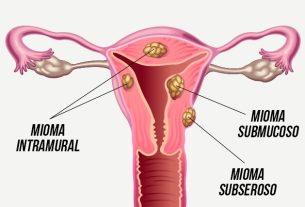Lung transplantation is a surgery to replace a diseased lung with a healthy one, normally indicated in cases of lung failure, caused by pulmonary fibrosis, chronic obstructive pulmonary disease (COPD), pulmonary hypertension or cystic fibrosis, for example.
Lung transplantation is only recommended when the person has exhausted the therapeutic arsenal aimed at that disease, but has not experienced improvement in symptoms and the lung does not function properly to supply oxygen to the body, and can be done by replacing one or both lungs, in some cases. In some cases, lung and heart transplants can be performed at the same time. See how a heart transplant is performed.
Although transplantation can improve quality of life and even cure some serious lung problems once and for all, it can also cause several complications and is therefore only used when other forms of treatment do not work. Furthermore, after the transplant, it is necessary to take immunosuppressant medications for life to reduce the chances of transplant rejection.

When is indicated
Lung transplantation is indicated for the treatment of serious lung diseases in advanced stages, such as:
- Cystic fibrosis;
- Sarcoidosis;
- Pulmonary fibrosis;
- Pulmonary hypertension;
- Lymphangioleiomyomatosis;
- severe bronchiectasis;
- Severe COPD.
Lung transplantation is normally indicated in more serious situations, when the lung is severely affected and, therefore, is unable to supply the amount of oxygen necessary to meet the needs of the body’s tissues, leading to a significant reduction in the person’s quality of life.
In addition to a lung transplant, many people also have associated heart problems and, in these cases, it may be necessary to have a heart transplant along with the lung or soon after, to ensure improvement in symptoms.
Most of the time, these diseases can be treated with simpler and less invasive treatments, such as pills or breathing devices, but when these techniques no longer produce the desired effect, transplantation may be an option recommended by the doctor.
Which doctor to consult?
The treatment of lung diseases is carried out by a pulmonologist, who may recommend lung transplantation in severe cases of lung failure, when damage to the lung is irreversible, preventing its proper functioning.
Taking care of your health has never been easier!
When transplant is not recommended
Although transplantation can be done in almost all people with worsening of these diseases, it is contraindicated in some cases, especially if there is an active infection, history of cancer or severe kidney disease.
Furthermore, if the person is not willing to make the lifestyle changes necessary to combat the disease, the transplant may also be contraindicated.
How to prepare for the transplant
The transplant process begins long before surgery, with a medical evaluation to identify whether there is any factor that prevents the transplant and assess the risk of rejection of the new lung. After this evaluation, and if you are selected, you must be placed on a waiting list for a compatible donor at a transplant center.
This wait can take between a few weeks and many months depending on some personal characteristics, such as blood type, organ size and severity of the disease, for example. When a donor is found, the hospital contacts the person who needs the donation to go to the hospital within a few hours and perform the surgery.
Once in the hospital, it is necessary to carry out a new assessment to ensure that the surgery will be a success and then transplant surgery begins.
Who can donate a lung
For almost all transplants performed, the organ is donated from a donor diagnosed with brain death. When evaluating the donor, some aspects are taken into account to understand whether it is an organ that can be donated, such as:
- Not have lung diseases;
- No infections;
- Have blood compatibility with the recipient;
- The size of the donor’s lung must be similar to that of the recipient.
Furthermore, the donor must have had brain death confirmed by different doctors through neurological tests and examinations. See how brain death is confirmed.
How the transplant is done
Lung transplant surgery is performed under general anesthesia and can last up to 8 hours for a single-lung transplant and up to 12 hours for a two-lung transplant.
During surgery, the surgeon removes the diseased lung, making a cut to separate the blood vessels and airway from the lung, then the new lung is placed in place and the vessels, as well as the airway, are connected again to the new organ. .
Since it is quite an extensive surgery, in some cases it may be necessary to connect the person to a machine that replaces the lungs and heart, but after surgery, the heart and lungs will function again without assistance.
What is recovery like?
Lung transplant recovery usually lasts at least 3 weeks in the hospital, depending on each person’s body. Immediately after surgery, it is necessary to stay in the ICU, as it is necessary to use a mechanical ventilator to help the new lung breathe correctly.
As the patient progresses, they will require less intensive care and may continue their hospitalization in a less complex sector of the hospital.
During the entire hospitalization, medications are administered directly into the vein, to reduce pain, the chances of rejection and also reduce the risk of developing an infection, but after discharge, these medications can be taken in the form of tablets, until the recovery process is finished. Only immunosuppressive medications should be maintained for life.
After discharge, the person will need to follow up with the pulmonologist for life, with this monitoring being more frequent in the first months. During these consultations, several tests will be carried out to adjust medications to avoid rejection and treat possible infections, in addition to monitoring the function of the new lung.
Possible risks
Lung transplantation may have some risks, which include rejection of the new lung, or infections, especially due to the use of immunosuppressive medications to prevent lung rejection, which reduce the action of the immune system.
Other related complications may occur, such as pleural effusion, hemothorax, pneumothorax, bronchial stenosis, narrowing or obstruction of pulmonary vessels, pulmonary thromboembolism or recurrence of the primary lung disease.

Sign up for our newsletter and stay up to date with exclusive news
that can transform your routine!
Warning: Undefined array key "title" in /home/storelat/public_html/wp-content/plugins/link-whisper-premium/templates/frontend/related-posts.php on line 12
Warning: Undefined array key "title_tag" in /home/storelat/public_html/wp-content/plugins/link-whisper-premium/templates/frontend/related-posts.php on line 13



